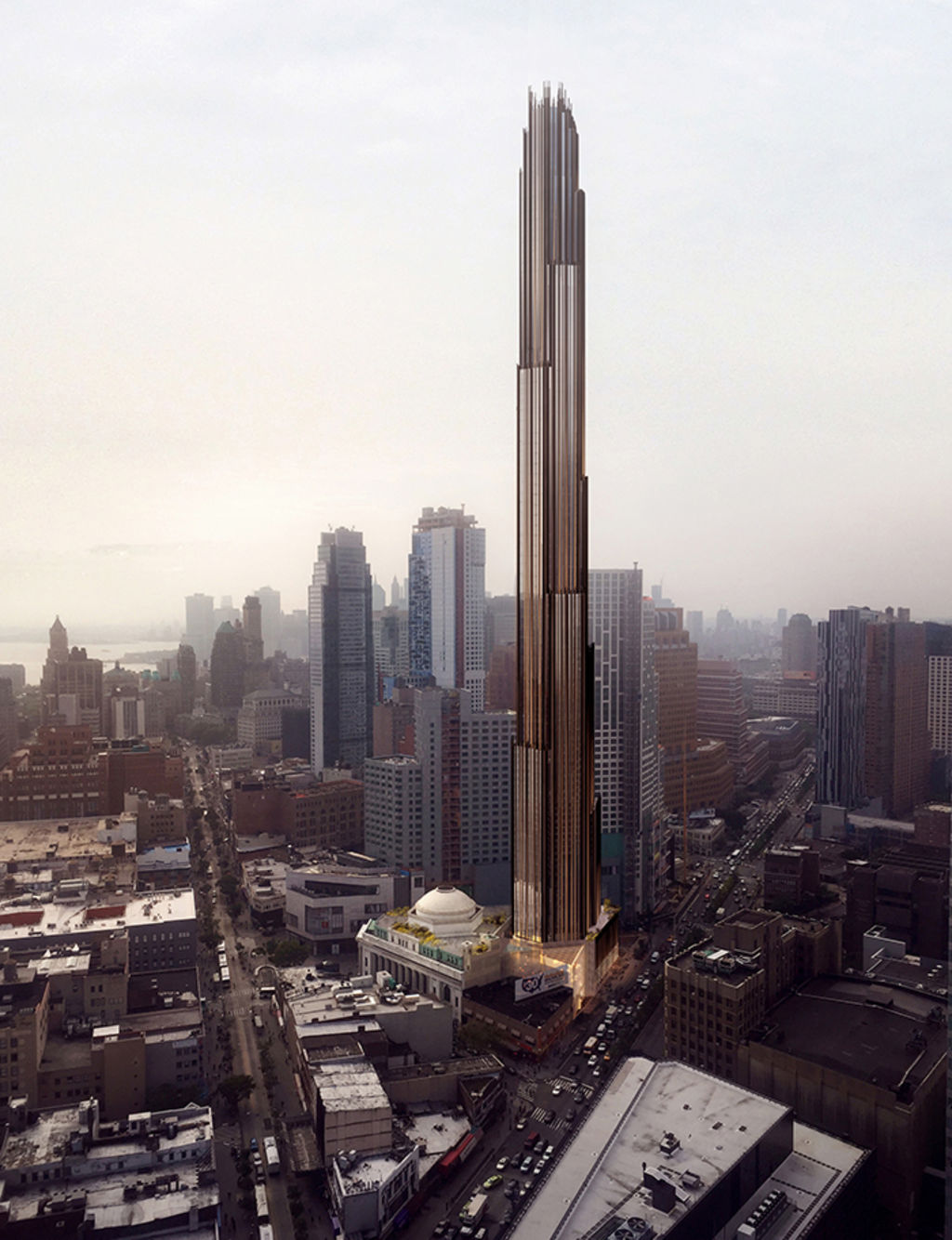
New skinny skyscrapers are changing city skylines around the world
Deepti Hajela
In New York City, there’s no escaping the pressure to be taller and thinner – not even for the skyscrapers.
Changes in building technology and materials in recent years have made it possible to build slender towers that are among the tallest in the world. And some of these cloud-puncturing beanstalks are poised to transform the city’s iconic skyline.
 A super-slim skyscraper at 432 Park Avenue competes with the Empire State building as it juts above the Manhattan skyline. Photo: AP Photo/Julie Jacobson
A super-slim skyscraper at 432 Park Avenue competes with the Empire State building as it juts above the Manhattan skyline. Photo: AP Photo/Julie Jacobson
So far, the thinnest of all is the recently completed apartment tower at 432 Park Avenue. The stark white pillar, just south of Central Park, is 425.5 metres tall, but each side is only about 28 metres wide.
That’s higher than the Empire State Building, but only as wide as the length of a basketball court.
Plans are in place for another tower just a few blocks away that could be the skinniest skyscraper in the world. The tower, at 111 W 57th Street, would be about 426.7 metres tall and under 18 metres wide.
 Two supertall skyscrapers, the slender 432 Park Avenue, left, and 157 W 57th St, right. Photo: AP Photo/Seth Wenig
Two supertall skyscrapers, the slender 432 Park Avenue, left, and 157 W 57th St, right. Photo: AP Photo/Seth Wenig
Those tiny footprints are a sharp departure from supertall skyscrapers of the past. The base of the Empire State Building, for example, occupies an entire city block.
“It’s a combination of advancements that allows us to build,” said Ahmad Rahimian, USA Director of Building Structures at WSP Parsons Brinckerhoff, an engineering firm that has worked on these kinds of projects.
He pointed to high-strength steel and concrete, unavailable a couple of decades ago, which can support higher levels of stress; advances in computing that allows for better modelling and building simulations; and advancements in damping devices, like weights, springs and pendulums which counteract swinging.
Damping systems are used in supertall buildings to help control how the structures move with the wind to make it more comfortable for the people inside.
 The 432 Park Avenue building towers above older and wider buildings in Manhattan. Photo: AP Photo/Seth Wenig
The 432 Park Avenue building towers above older and wider buildings in Manhattan. Photo: AP Photo/Seth Wenig
Better engineering alone isn’t driving the race for thinner towers.
In New York City, these days, there is very little land available for building. Buying up a whole block for a huge skyscraper could be prohibitively expensive.
“This is pretty unique to what’s happening in New York right now,” said Antony Wood, executive director of the Council on Tall Buildings and Urban Habitat, a group that studies and promotes tall buildings.
 An artist’s impression of the proposed Elysium tower in Melbourne. Photo: BKK Architects
An artist’s impression of the proposed Elysium tower in Melbourne. Photo: BKK Architects
In Australia, a super-slim residential tower is planned for Southbank, Melbourne.
Elysium will be 243.8 metres tall with 270 apartments on 75 floors. At the narrowest point of its curved design, the tower will be 12 metres wide.
By CTBUH’s count, there are now 101 supertall skyscrapers standing in the world, with 51 of them built just in the last five years. It counts a building as meeting the definition if it is over 300 metres tall.
By 2020, another eight supertalls are slated to be completed in New York City, some office buildings and some residential.
 An artist’s rendering of the 9 Dekalb building planned for Brooklyn. Photo: SHoP Architects via AP
An artist’s rendering of the 9 Dekalb building planned for Brooklyn. Photo: SHoP Architects via AP
At least another 10 have been proposed, including the first one outside of Manhattan. At its current planned height of just over 300 metres, the 73-storey building 9 Dekalb in downtown Brooklyn would dwarf every other building in the borough.
Prices in these buildings are expected to be as sky-high as the views.
A three-bedroom apartment at 432 Park Avenue is currently listing for $24.84 million ($US17.75 million). A penthouse is listed for $US75.5 million.
Associated Press










